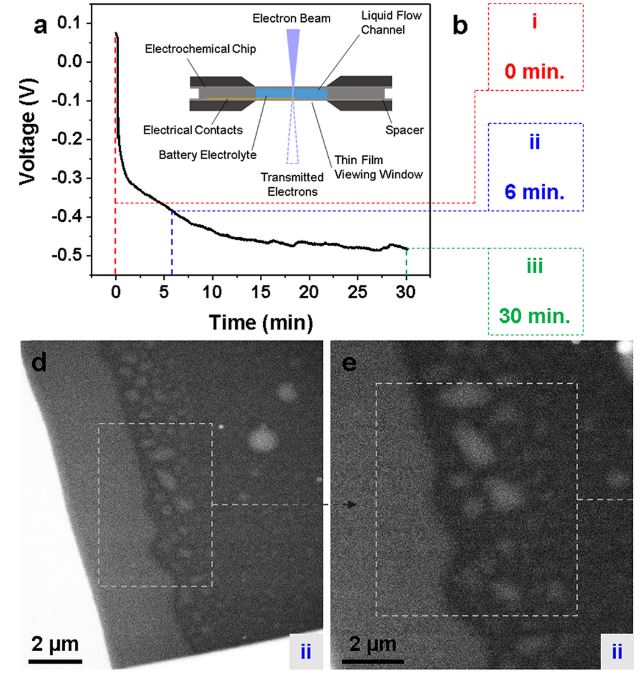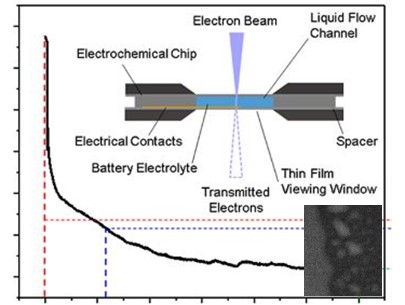In the article published in the journal ACS Applied Energy Materials, researchers led by Toyota has demonstrated for the first time that the in-situ generation of functional layer, so-called SEI layer, improved the deposition and stripping of Mg without creating an internal short even when performed at higher charge and discharge rates. The work used Hummingbird Scientific TEM liquid cell platform to demonstrate insights into this in-situ behavior.

The next-generation of electric cars can have a significant advantage if the batteries provide both long range and charge at a faster rate. Magnesium batteries could have the potential to fulfill that demand. Here, the researchers used liquid cell scanning transmission electron microscopy (STEM) to perform in-situ charge and discharge of magnesium batteries and discovered that the thin layers that form at the solid-liquid interface, which is generally termed as SEI layers, enabled continuous deposition and dissolution of Mg at higher cycling rates. This is in stark contrast with the lithium battery technology where the SEI formation is known to cause dendritic growth and catastrophic shorting of the battery leading to fire. The stability of SEI observed in this study could lead to the design of batteries which are not only safe but allow higher energy density.
Reference: Nikhilendra Singh, Timothy S. Arthur, Oscar Tutusaus, Jing Li, Kim Kisslinger, Huolin L. Xin, Eric A. Stach, Xudong Fan, and Rana Mohtadi. “Achieving High Cycling Rates via In-situ Generation of Active Nanocomposite Metal Anodes.” ACS Applied Energy Materials (2018). DOI: 10.1021/acsaem.8b00794
View All News

